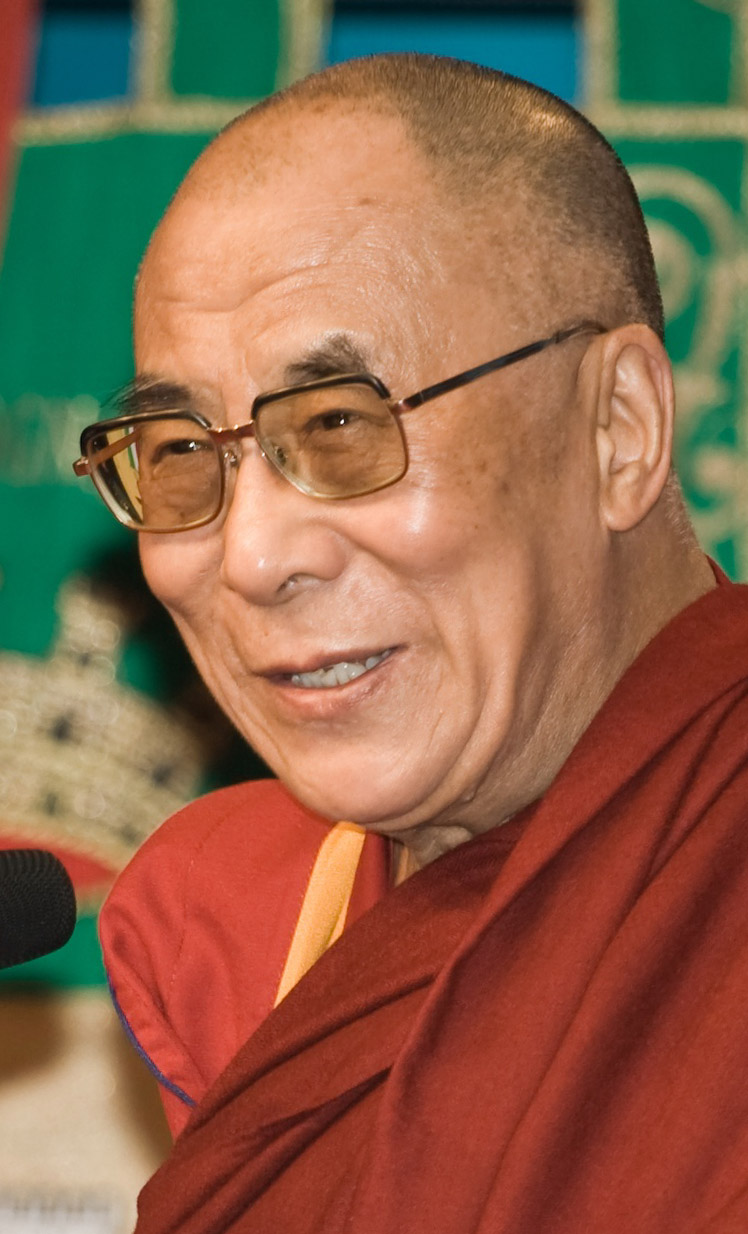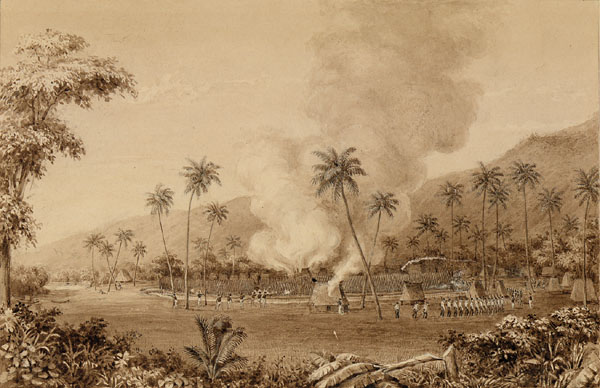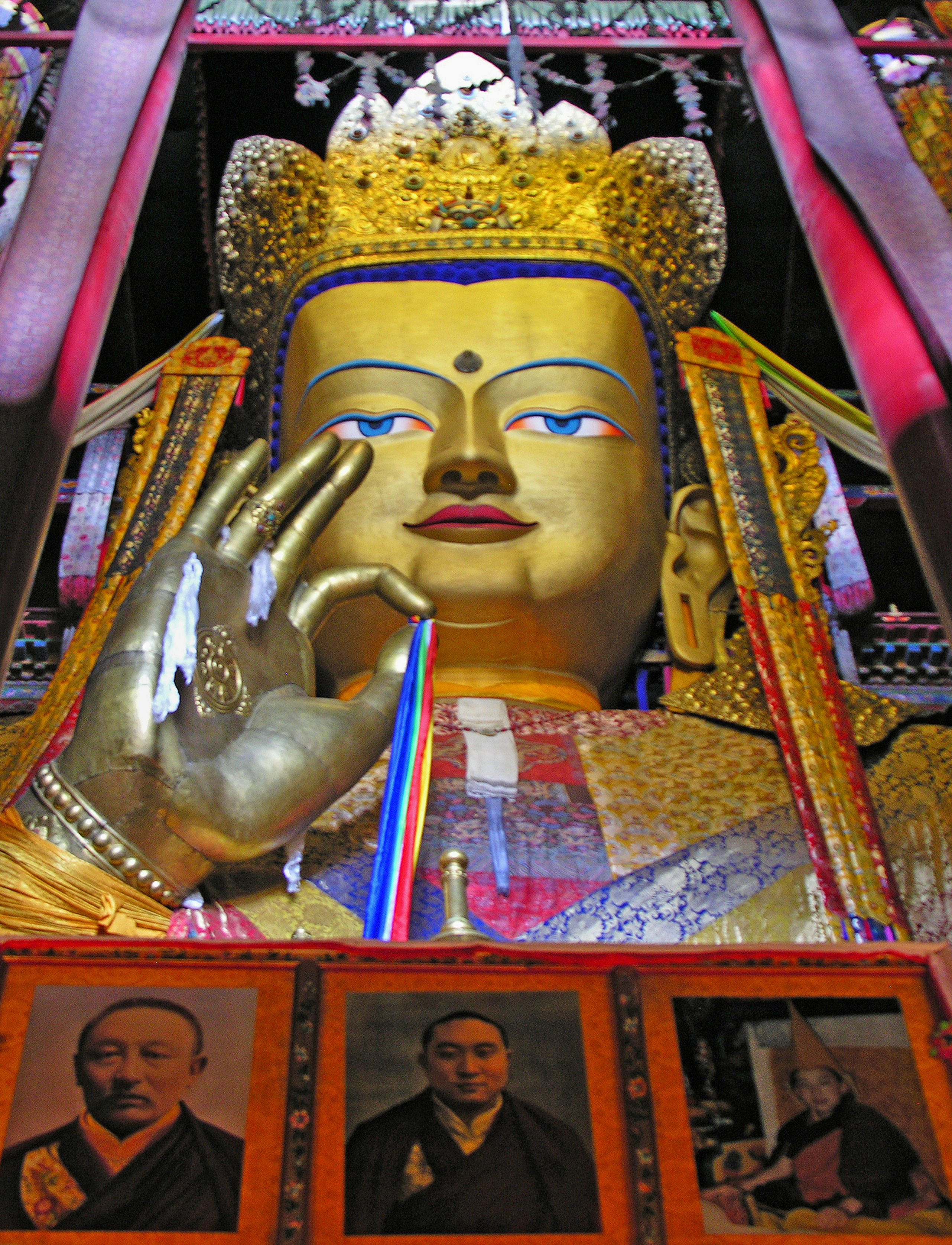|
1905 Tibetan Rebellion
The Batang uprising () was an uprising by the Khampas of Kham against the assertion of authority by Qing China. The uprising began as an opposition to the new policies of land reclamation and limits of the monastic community. The policies were implemented by Feng Quan, Qing's assistant amban to Tibet, stationed in Chamdo (in western Kham). Feng Quan was murdered in the uprising and four French Catholic missionaries, perceived as Qing allies, fell victim to mobs led by lamas. One was killed immediately (his remains were never found), another was tortured for twelve days before he was executed, while the other two were pursued for three months and beheaded upon capture. Ten Catholic churches were burned down and a mass of locals that had converted to Catholicism were killed. Under French pressure to protect missionaries and domestic pressure to stop the threat of the British invading from the west frontier, Feng Quan's successor Zhao Erfeng led a bloody punitive campaign to quel ... [...More Info...] [...Related Items...] OR: [Wikipedia] [Google] [Baidu] |
Kham
Kham (; ) is one of the three traditional Tibet, Tibetan regions, the others being Domey also known as Amdo in the northeast, and Ü-Tsang in central Tibet. The official name of this Tibetan region/province is Dotoe (). The original residents of Kham are called Khampas (), and were governed locally by chieftains and monasteries. Kham covers a land area distributed in multiple province-level administrative divisions in present-day China, most of it in Tibet Autonomous Region and Sichuan, with smaller portions located within Qinghai and Yunnan. Densely forested with grass plains, its convergence of six valleys and four rivers supported independent Kham polities of Tibetan warrior kingdoms together with Tibetan Buddhist monastic centers.Jann Ronis"An Overview of Kham (Eastern Tibet) Historical Polities" The University of Virginia The early trading route between Central Tibet and China traveled through Kham, and Kham is said to be the inspiration for Shangri-La in James Hilton's nove ... [...More Info...] [...Related Items...] OR: [Wikipedia] [Google] [Baidu] |
List Of Qing Imperial Residents In Tibet
From 1727 until 1912, roughly corresponding to the era of Tibet under Qing rule, the Qing Emperor appointed " imperial commissioner-resident of Tibet" (). The official rank of the imperial resident is ''amban'' (, colloquially "High Commissioner"). With increasing diplomatic contacts between the British and the Qing in from the 1890s, some assistant ambans () were just as notable as the senior ambans. Two of them, Feng Quan and Zhao Erfeng, who were stationed in Chamdo, were both murdered, the former in the Batang uprising and the latter in Xinhai Revolution. List The ethnicity of several ambans are unknown. By ethnicity, of the 80 ambans, most were Manchu and four were Han: Zhou Ying, Bao Jinzhong, Meng Bao, and Zhao Erfeng. At least fifteen Mongols were known to have served as ambans, perhaps more. (''H=Han, M=Mongol, ?=unknown, unmarked=Manchu)'' * Sengge 僧格 1727–1733 * Mala 馬臘 1728,1729–1731, 1733–1736 * Mailu 邁祿 1727–1733 * Zhou Ying 周� ... [...More Info...] [...Related Items...] OR: [Wikipedia] [Google] [Baidu] |
Yangtze
The Yangtze or Yangzi ( or ) is the longest river in Eurasia and the third-longest in the world. It rises at Jari Hill in the Tanggula Mountains of the Tibetan Plateau and flows including Dam Qu River the longest source of the Yangtze, in a generally easterly direction to the East China Sea. It is the fifth-largest primary river by discharge volume in the world. Its drainage basin comprises one-fifth of the land area of China, and is home to nearly one-third of the country's population. The Yangtze has played a major role in the history, culture, and economy of China. For thousands of years, the river has been used for water, irrigation, sanitation, transportation, industry, boundary-marking, and war. The Yangtze Delta generates as much as 20% of China's GDP, and the Three Gorges Dam on the Yangtze is the largest hydro-electric power station in the world. In mid-2014, the Chinese government announced it was building a multi-tier transport network, comprising railway ... [...More Info...] [...Related Items...] OR: [Wikipedia] [Google] [Baidu] |
British Expedition To Tibet
The British expedition to Tibet, also known as the Younghusband expedition, began in December 1903 and lasted until September 1904. The expedition was effectively a temporary invasion by British Indian Army, British Indian Armed Forces under the auspices of the Tibet Frontier Commission, whose purported mission was to establish diplomatic relations and resolve the dispute over the border between Tibet and Kingdom of Sikkim, Sikkim.Landon, P. (1905). ''The Opening of Tibet'' Doubleday, Page & Co, New York. In the nineteenth century, the British had conquered Konbaung dynasty, Burma and Sikkim, with the whole southern flank of Tibet coming under the control of the British Raj, British Indian Empire. Tibet was ruled by the 13th 13th Dalai Lama, Dalai Lama under the Ganden Phodrang government as a Himalayas, Himalayan state under the Tibet under Qing rule, protectorate (or suzerainty) of the Chinese Qing dynasty until the 1911 Revolution, after which a Tibet (1912–1951), period of ... [...More Info...] [...Related Items...] OR: [Wikipedia] [Google] [Baidu] |
Tibet Under Qing Rule
Tibet under Qing rule refers to the Qing dynasty's rule over Tibet from 1720 to 1912. The Qing rulers incorporated Tibet into the empire along with Qing dynasty in Inner Asia, other Inner Asia territories, although the actual extent of the Qing dynasty's control over Tibet during this period has been the subject of political debate. The Qing called Tibet a ''fanbu'', ''fanbang'' or ''fanshu'', which has usually been translated as "vassal", "vassal state", or "borderlands", along with areas like Xinjiang and Mongolia. Like the earlier Yuan dynasty, the Manchus of the Qing dynasty exerted military and administrative control over Tibet, while granting it a degree of political autonomy.Starting from extablishment of Imperial Monument to the Pacification of Xizang, term Xizang was officially used to replace older names to designate the region. By 1642, Güshi Khan of the Khoshut Khanate had reunified Tibet under the spiritual and temporal authority of the 5th Dalai Lama of the Gelug sc ... [...More Info...] [...Related Items...] OR: [Wikipedia] [Google] [Baidu] |
Lama
Lama () is a title bestowed to a realized practitioner of the Dharma in Tibetan Buddhism. Not all monks are lamas, while nuns and female practitioners can be recognized and entitled as lamas. The Tibetan word ''la-ma'' means "high mother", and reflects the qualities of the person entitled as a lama."lama" from Historically and currently, the term is bestowed on venerated spiritual masters and may be part of a specific lineage title such as the Dalai Lama [...More Info...] [...Related Items...] OR: [Wikipedia] [Google] [Baidu] |
Tibetan Buddhist
Tibetan Buddhism is a form of Buddhism practiced in Tibet, Bhutan and Mongolia. It also has a sizable number of adherents in the areas surrounding the Himalayas, including the Indian regions of Ladakh, Darjeeling, Sikkim, and Arunachal Pradesh, as well as in Nepal. Smaller groups of practitioners can be found in Central Asia, some regions of China such as Northeast China, Xinjiang, Inner Mongolia and some regions of Russia, such as Tuva, Buryatia, and Kalmykia. Tibetan Buddhism evolved as a form of Mahāyāna Buddhism stemming from the latest stages of Indian Buddhism (which included many Vajrayāna elements). It thus preserves many Indian Buddhist tantric practices of the post-Gupta early medieval period (500–1200 CE), along with numerous native Tibetan developments. In the pre-modern era, Tibetan Buddhism spread outside of Tibet primarily due to the influence of the Mongol Yuan dynasty (1271–1368), founded by Kublai Khan, who ruled China, Mongolia, and parts of S ... [...More Info...] [...Related Items...] OR: [Wikipedia] [Google] [Baidu] |
Simla Convention Borders In Kham
Shimla, also known as Simla ( the official name until 1972), is the capital and the largest city of the northern Indian state of Himachal Pradesh. In 1864, Shimla was declared the summer capital of British India. After independence, the city became the capital of East Punjab and was later made the capital city of Himachal Pradesh. It is the principal commercial, cultural and educational centre of the state. Small hamlets were recorded before 1815 when British forces took control of the area. The climatic conditions attracted the British to establish the city in the dense forests of the Himalayas. As the summer capital, Shimla hosted many important political meetings including the Simla Deputation of 1906, the Simla Accord of 1914 and the Simla Conference of 1945. After independence, the state of Himachal Pradesh came into being in 1948 as a result of the integration of 28 princely states. Even after independence, the city remained an important political centre, hosting the ... [...More Info...] [...Related Items...] OR: [Wikipedia] [Google] [Baidu] |
1911 Revolution
The 1911 Revolution, also known as the Xinhai Revolution or Hsinhai Revolution, ended China's last imperial dynasty, the Qing dynasty, and led to the establishment of the Republic of China (ROC). The revolution was the culmination of a decade of agitation, revolts, and uprisings. Its success marked the collapse of the Chinese monarchy, the end of over two millennia of imperial rule in China and the 200-year reign of the Qing, and the beginning of China's early republican era. The Qing had struggled for a long time to reform the government and resist foreign aggression, but the program of reforms after 1900 was opposed by conservatives in the Qing court as too radical and by reformers as too slow. Several factions, including underground anti-Qing groups, revolutionaries in exile, reformers who wanted to save the monarchy by modernizing it, and activists across the country debated how or whether to overthrow the Qing dynasty. The flash-point came on 10 October 1911, with th ... [...More Info...] [...Related Items...] OR: [Wikipedia] [Google] [Baidu] |
Punitive Campaign
A punitive expedition is a military journey undertaken to punish a political entity or any group of people outside the borders of the punishing state or union. It is usually undertaken in response to perceived disobedient or morally wrong behavior by miscreants, as revenge or corrective action, or to apply strong diplomatic pressure without a formal declaration of war (e.g. surgical strike). In the 19th century, punitive expeditions were used more commonly as pretexts for colonial adventures that resulted in annexations, regime changes or changes in policies of the affected state to favour one or more colonial powers. Stowell (1921) provides the following definition: When the territorial sovereign is too weak or is unwilling to enforce respect for international law, a state which is wronged may find it necessary to invade the territory and to chastise the individuals who violate its rights and threaten its security. Historical examples *In the 5th century BC, the Achaemenid ... [...More Info...] [...Related Items...] OR: [Wikipedia] [Google] [Baidu] |
Decapitation
Decapitation is the total separation of the head from the body. Such an injury is invariably fatal to humans and all vertebrate animals, since it deprives the brain of oxygenated blood by way of severing through the jugular vein and common carotid artery, while all other organs are deprived of the autonomic nervous system, involuntary functions that are needed for the body to function. The term beheading refers to the act of deliberately decapitating a person, either as a means of murder or as an capital punishment, execution; it may be performed with an axe, sword, or knife, or by mechanical means such as a guillotine. An executioner who carries out executions by beheading is sometimes called a headsman. Accidental decapitation can be the result of an explosion, a car or industrial accident, improperly administered execution by hanging or other violent injury. The national laws of Saudi Arabia and Yemen permit beheading. Under Sharia in Nigeria, Sharia, which exclusively appl ... [...More Info...] [...Related Items...] OR: [Wikipedia] [Google] [Baidu] |
Religion In Tibet
The main religion in Tibet has been Buddhism since its introduction in the 8th century AD. the historical region of Tibet (the areas inhabited by ethnic Tibetans) mostly comprises the Tibet Autonomous Region (TAR) of China and partly the Chinese provinces of Qinghai, Sichuan, Gansu, and Yunnan. Before the arrival of Buddhism, the main religion among Tibetans was an indigenous shamanism, shamanic and animism, animistic religion, Bon, which would later influence the formation of Tibetan Buddhism and still attracts the allegiance of a sizeable minority of Tibetans. According to estimates from the International Religious Freedom Report of 2012, most Tibetans (who comprise 91% of the population of the Tibet Autonomous Region) are associated with Tibetan Buddhism, while a minority of 400,000 people (12.5% of the total population of the TAR) profess the native Bon religion. Other groups in Tibet practise folk religions which share the image of Confucius (Tibetic languages, Tibetan: ''K ... [...More Info...] [...Related Items...] OR: [Wikipedia] [Google] [Baidu] |










